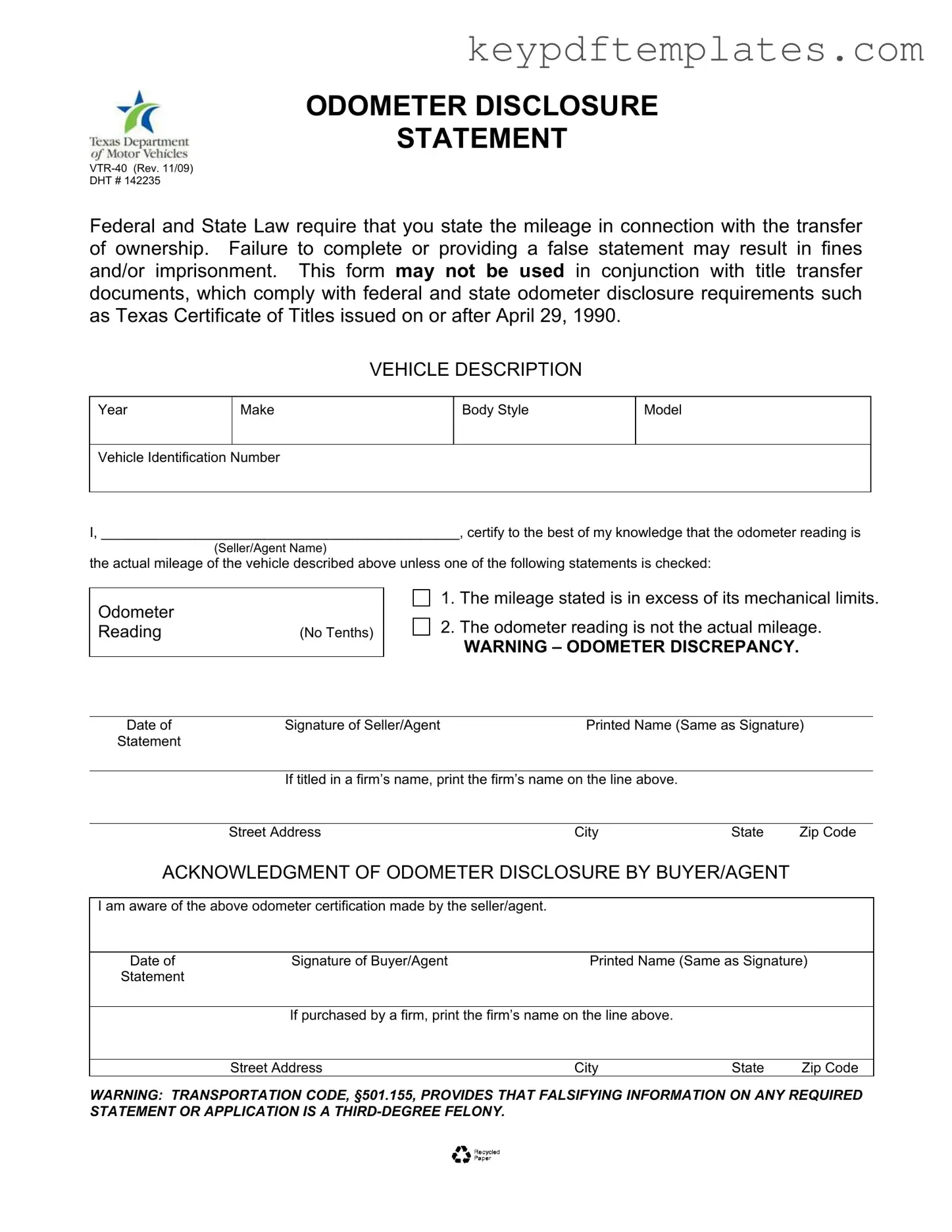Get Texas Odometer Statement Form
The Texas Odometer Statement form, officially known as VTR-40, is a legal document required during the transfer of vehicle ownership. This form ensures that the seller accurately states the vehicle's mileage, as mandated by federal and state laws. Failing to complete this form correctly can lead to serious consequences, including fines or imprisonment.
Modify Document Online
